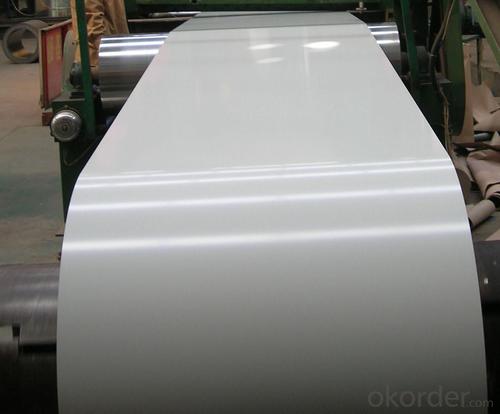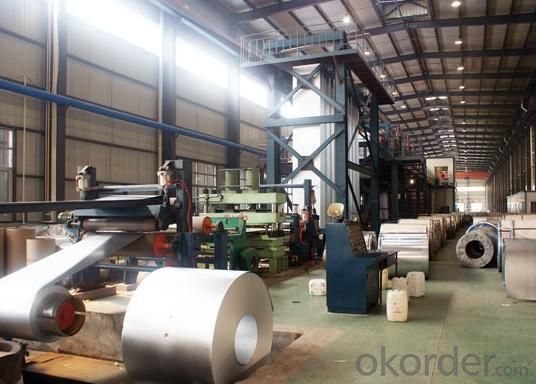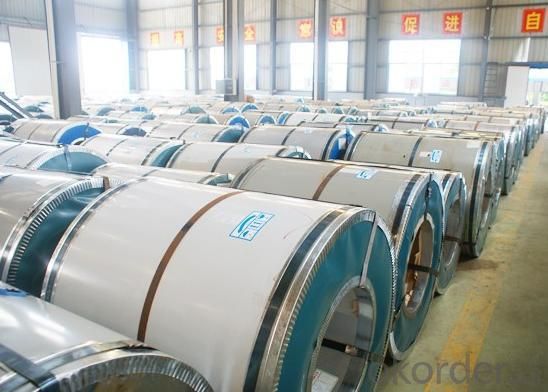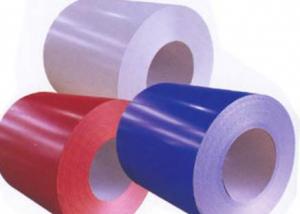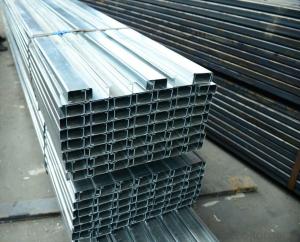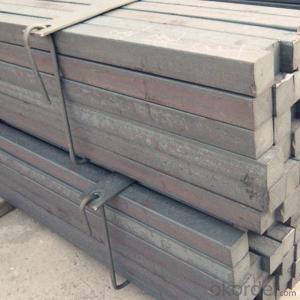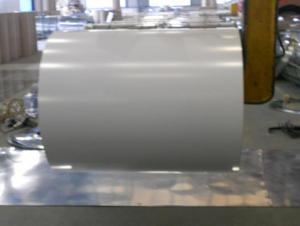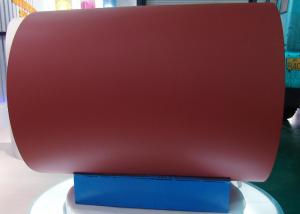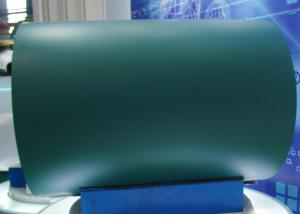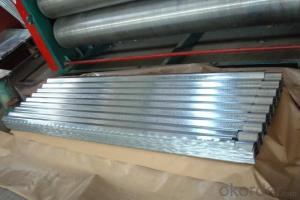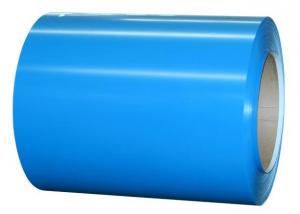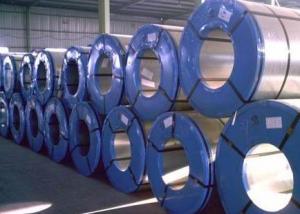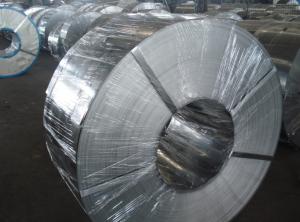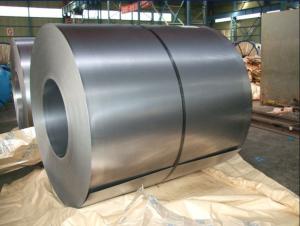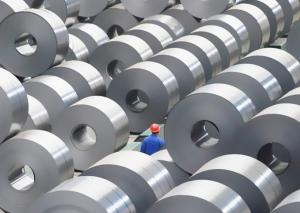Best Quality for Prepainted Galvanized Steel - White
- Loading Port:
- Shanghai Port
- Payment Terms:
- TT or LC
- Min Order Qty:
- 50mt m.t.
- Supply Capability:
- 150000 t / year m.t./month
OKorder Service Pledge
OKorder Financial Service
You Might Also Like
Best Quality for Prepainted Galvanized Steel - White
With galvanized steel as base metal, after pretreatment (degrease and chemical treatment) and liquid dope with several layers of color, then after firing and cooling, finally the plate steel is called pre-painted galvanized steel. Pre-painted galvanized steel is good capable of decoration, molding, corrosion resistance. It generally displays superior workability, durability and weather resistance.
Brand Name: OKLSTEEL
Specifications Of Best Quality for Prepainted Galvanized Steel - White
|
Thickness 0.186-0.8mm (BMT) Width 1000-1250mm |
|
Zinc Coating 80-275g/m2 |
|
Color According to RAL color fan or as per request |
|
Internal Diameter 508mm or 610mm |
|
Coil Weight 4-8MT |
|
Quality Commercial and structural quality |
|
Paint Polyester paint for topside, epoxy for reverse |
|
Standard JIS G 3312, ASTM A755M, EN 10169 |
|
Base Steel Grade SGCC,SGCD,DX51D+Z,DX52D+Z;S200GD,S220GD,S280GD,S350GD,CS,FS,SS |
Chemical Composition Of Best Quality for Prepainted Galvanized Steel - White
|
C |
Si |
Mn |
P |
|
0.04-0.06% |
0.01-0.03% |
0.18-0.22% |
0.014-0.016% |
Technical Data Of Best Quality for Prepainted Galvanized Steel - White
|
Yield Strength |
(Mpa) 280-320 |
|
Tensile Strength |
(Mpa) 340-390 |
|
Elongation |
20%-30% |
|
Reverse Impact |
9J |
|
T-bending |
≥2T |
|
Pencil Hardness |
≥2H |
|
Duration Of Salt Spray Test |
500 H |
|
Bending At 180 Degree |
No crack, purling and fraction |
Applications Of Best Quality for Prepainted Galvanized Steel - White
It can be widely used in transportation, light industry, civil usage and farming. It is also the perfect building material in construction for making steel roofing,insulation panel, corrugate sheet, facade wall,shutters,T-bar and home appliance.
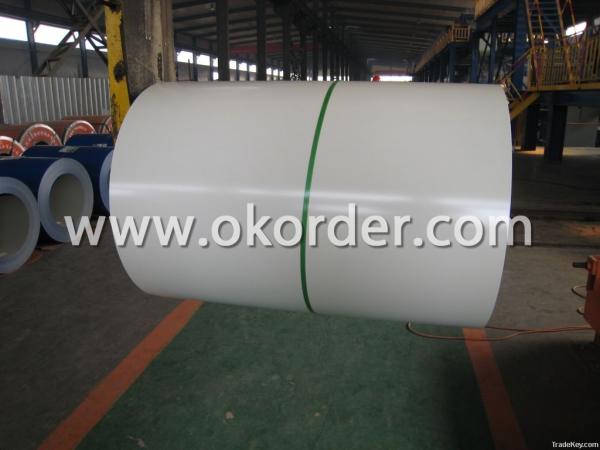
Packaging & Delivery Of Best Quality for Prepainted Galvanized Steel - White
The packing of coils consists of anti-damp paper, PVC film, hardboard paper, steel box, strapped with steel strips, fitted with locks and edge protectors and guarantees the optimal condition of the delivered goods. Each coil can be additionally fitted with wooden/steel skids(eye to the side) or wooden pallets(eye to the sky).

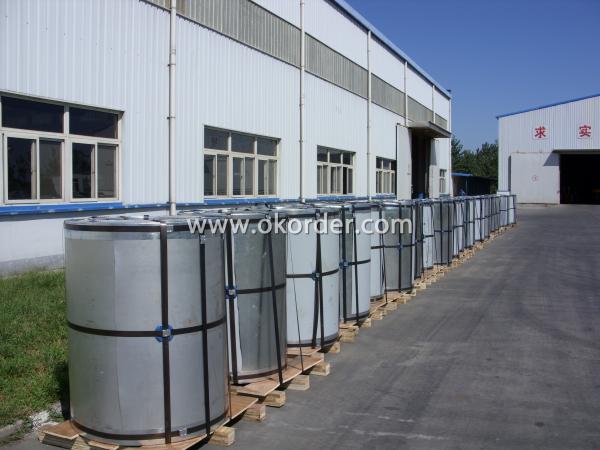
Production Flow Of Best Quality for Prepainted Galvanized Steel - White
Production flow of hot sell prepainted galvanized steel include dual uncoiler,stitcher, bridles, entry accumulater, degreasing & chemical section, prime coater, prime oven, prime water quench, finish coating, finish back coater, finish oven, finish water quench, exit accumulater and recoiler.
- Q: How is steel sheet metal fabricated?
- Steel sheet metal is fabricated through a process called sheet metal fabrication, which involves cutting, bending, and shaping steel sheets to create various products or components. This can be done using various techniques such as shearing, punching, laser cutting, or plasma cutting to cut the steel sheets into the desired shape. Bending is then carried out using press brakes or other bending tools to give the sheets the required angles and curves. The final step involves assembling or joining the fabricated pieces using welding, riveting, or other joining methods to create the desired steel sheet metal product.
- Q: How do steel products contribute to the infrastructure development of cities and urban areas?
- Steel products play a crucial role in the infrastructure development of cities and urban areas. Due to their high strength, durability, and versatility, steel products are widely used in the construction of buildings, bridges, roads, and other essential structures. Steel's ability to withstand heavy loads and extreme weather conditions makes it an ideal choice for constructing tall buildings and long-span bridges, ensuring the safety and longevity of these structures. Additionally, steel's recyclability and sustainability make it an environmentally-friendly choice, contributing to the sustainable development of cities and urban areas. Overall, steel products are essential in creating robust and resilient infrastructure that supports the growth and development of cities and urban areas.
- Q: What are the applications of steel forgings in the aerospace industry?
- Steel forgings are widely used in the aerospace industry due to their exceptional strength, durability, and resistance to extreme conditions. They are commonly employed in critical components such as turbine disks, landing gear, wing fittings, and engine shafts. The superior mechanical properties of steel forgings ensure optimal performance, reliability, and safety in aircraft, making them vital for the aerospace sector.
- Q: What are the different types of steel valves?
- There are several different types of steel valves, including gate valves, globe valves, ball valves, butterfly valves, and check valves.
- Q: What are the properties of tool steel for precision cutting tools?
- Tool steel for precision cutting tools is known for its high hardness, wear resistance, and toughness. It has excellent dimensional stability, allowing for precise cutting and shaping. It also possesses good heat resistance, enabling it to withstand high temperatures without losing its hardness. Additionally, tool steel for precision cutting tools often has good edge retention and can be easily sharpened, making it ideal for long-lasting, accurate cutting performance.
- Q: How are steel beams used in building structures?
- Steel beams are used in building structures to provide structural support and stability. They are commonly used as load-bearing elements to transfer the weight of the building to its foundations. Steel beams can span long distances and can support heavy loads, making them ideal for constructing large and tall structures like skyscrapers and bridges. Additionally, steel beams can be easily fabricated and installed, allowing for efficient construction processes.
- Q: How is steel used in the construction of sports stadiums and arenas?
- Steel is used extensively in the construction of sports stadiums and arenas due to its strength, durability, and versatility. It is used to create the framework and support structure of the building, including the roof, columns, beams, and trusses. Steel allows for large, open spaces without the need for excessive support columns, providing unobstructed views for spectators. Additionally, steel is used in the construction of seating areas, staircases, and walkways, ensuring safety and stability. Overall, steel plays a crucial role in creating the impressive and functional structures necessary for modern sports venues.
- Q: What are the applications of alloy steel in manufacturing?
- Alloy steel is widely used in manufacturing due to its exceptional properties and versatility. It is utilized in various applications such as the production of machinery, automotive parts, tools, construction materials, and even in the aerospace industry. The high strength, durability, and resistance to corrosion and wear make alloy steel ideal for manufacturing components that require high tensile strength, toughness, and the ability to withstand harsh environments. Additionally, alloy steel can be easily machined, welded, and heat-treated, allowing for greater flexibility in the manufacturing process.
- Q: What are the different types of steel grilles and screens available?
- There are several types of steel grilles and screens available, including security grilles, window screens, decorative grilles, ventilation grilles, and fence screens. These variations cater to different purposes such as enhancing security, providing airflow, adding aesthetics, and creating privacy.
- Q: How are steel products used in the manufacturing of appliances?
- Steel products are used in the manufacturing of appliances due to their strength, durability, and heat resistance properties. Steel is commonly used as the primary material for the structural components of appliances, such as frames, cabinets, and doors. It is also used for the inner workings of appliances, including motors, heating elements, and other mechanical parts. Additionally, steel is used for the exterior finishes of appliances, providing a sleek and modern look. Overall, steel plays a vital role in ensuring the functionality, longevity, and aesthetic appeal of various appliances.
1. Manufacturer Overview
| Location | Jiangsu, China |
| Year Established | 2003 |
| Annual Output Value | US$1 Million - US$2.5 Million |
| Main Markets | Mid East;Western Africa;Sourth America;southeastern Asia |
| Company Certifications | ISO9001:2000 |
2. Manufacturer Certificates
| a) Certification Name | |
| Range | |
| Reference | |
| Validity Period |
3. Manufacturer Capability
| a) Trade Capacity | |
| Nearest Port | Shanghai Port, China |
| Export Percentage | 41% - 50% |
| No.of Employees in Trade Department | 21-50 People |
| Language Spoken: | Chinese, English |
| b) Factory Information | |
| Factory Size: | 10,000-30,000 square meters |
| No. of Production Lines | Above 10 |
| Contract Manufacturing | OEM Service Offered |
| Product Price Range | Average |
Send your message to us
Best Quality for Prepainted Galvanized Steel - White
- Loading Port:
- Shanghai Port
- Payment Terms:
- TT or LC
- Min Order Qty:
- 50mt m.t.
- Supply Capability:
- 150000 t / year m.t./month
OKorder Service Pledge
OKorder Financial Service
Similar products
Hot products
Hot Searches
Related keywords



